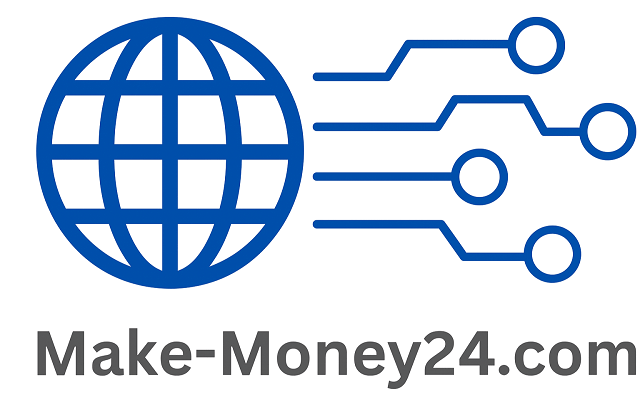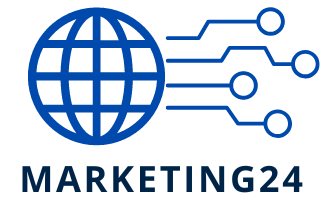By 2025, AI automation is set to revolutionize industries by streamlining operations, reducing human error, and increasing efficiency. In manufacturing, smart factories powered by AI-driven robotics will handle complex assembly lines with minimal human intervention, optimizing production cycles and reducing downtime. Healthcare will see AI-assisted diagnostics and robotic surgeries becoming commonplace, improving precision and patient outcomes while alleviating the burden on overworked medical staff. Even traditionally human-centric sectors like customer service will shift, with advanced chatbots and virtual assistants handling up to 80% of routine inquiries, freeing employees to focus on complex problem-solving. The result? A workforce that leans into creativity and strategy while AI handles repetitive tasks.

The Rise of AI Automation: What’s Changing in 2025?
Beyond the workplace, AI automation will reshape daily life in ways that feel both futuristic and inevitable. Smart homes equipped with AI-driven systems will anticipate residents’ needs, adjusting lighting, temperature, and even grocery orders based on behavioral patterns. Autonomous vehicles, once a novelty, will dominate urban transportation, reducing accidents caused by human error and optimizing traffic flow through real-time data analysis. Even personal finance will see a shift, with AI advisors managing investments and detecting fraudulent activity faster than any human could. These changes won’t just save time—they’ll redefine convenience, making seamless, predictive assistance the new standard.
However, this rapid transformation isn’t without challenges. The displacement of jobs due to automation will require massive reskilling efforts, pushing governments and corporations to invest in education and training programs. Ethical concerns, such as data privacy and algorithmic bias, will demand stricter regulations to ensure AI systems operate transparently and fairly. Meanwhile, the digital divide could widen if access to AI-driven tools remains unequal across socioeconomic groups. While the benefits of AI automation are undeniable, navigating its societal impact will be crucial to ensuring these advancements create a more equitable future rather than deepening existing disparities.
Key AI Automation Trends You Can’t Ignore
The rapid evolution of AI-driven automation is transforming industries at an unprecedented pace. One of the most significant trends is the rise of hyper-automation, where businesses integrate AI, machine learning, and robotic process automation (RPA) to streamline complex workflows. This approach goes beyond simple task automation, enabling systems to learn, adapt, and make decisions with minimal human intervention. Industries like finance, healthcare, and manufacturing are leveraging hyper-automation to reduce operational costs, eliminate repetitive tasks, and enhance accuracy. For example, AI-powered chatbots now handle customer service inquiries with near-human precision, while predictive analytics optimize supply chains in real time. The implications are profound—companies that fail to adopt these technologies risk falling behind in efficiency and competitiveness.
Another groundbreaking trend is the democratization of AI, making advanced automation tools accessible to small and medium-sized businesses (SMBs). Cloud-based AI platforms and no-code solutions allow organizations with limited technical expertise to deploy automation without hefty investments in infrastructure or specialized talent. Tools like OpenAI’s GPT-4 and Google’s AutoML enable SMBs to automate content creation, data analysis, and even decision-making processes. This shift levels the playing field, empowering smaller players to compete with industry giants. However, it also raises ethical concerns, such as the potential for misuse of AI-generated content or biased decision-making algorithms. As these tools become more widespread, businesses must prioritize transparency and accountability to maintain trust.
Perhaps the most transformative trend is the integration of AI with the Internet of Things (IoT), creating intelligent ecosystems that operate autonomously. Smart factories, for instance, use AI-driven sensors and robotics to monitor equipment health, predict maintenance needs, and optimize production schedules without human oversight. Similarly, smart cities employ AI-powered traffic management systems to reduce congestion and lower emissions. These advancements promise to revolutionize efficiency and sustainability but also pose challenges, such as job displacement and data privacy risks. Governments and organizations must collaborate to establish regulatory frameworks that balance innovation with societal well-being. The future of AI automation is undeniably exciting, but its success hinges on responsible adoption and continuous adaptation to emerging challenges.
Industries Most Affected by AI Automation
The healthcare industry is undergoing a seismic shift due to AI automation, particularly in diagnostics, patient care, and administrative tasks. AI-powered tools like machine learning algorithms can analyze medical images with remarkable accuracy, often detecting anomalies faster than human radiologists. Virtual health assistants and chatbots are streamlining patient interactions, reducing wait times, and improving accessibility to medical advice. Even behind the scenes, AI is optimizing hospital operations—predicting patient admissions, managing supply chains, and automating billing processes—freeing up healthcare professionals to focus on delivering personalized care. However, this transformation also raises ethical concerns about data privacy and the need for human oversight in critical medical decisions.
Finance is another sector where AI automation is making waves, revolutionizing everything from fraud detection to customer service. Banks and investment firms now rely on AI-driven algorithms to analyze vast datasets in real time, identifying suspicious transactions with unprecedented precision. Robo-advisors are democratizing wealth management by offering low-cost, automated portfolio recommendations tailored to individual risk profiles. Meanwhile, AI-powered chatbots handle routine customer inquiries, reducing operational costs and improving response times. Despite these benefits, the rapid adoption of AI in finance has sparked debates about job displacement and the potential for algorithmic biases in lending and credit scoring.
Manufacturing has long been at the forefront of automation, but AI is taking it to new heights with predictive maintenance, quality control, and supply chain optimization. Smart factories equipped with AI-driven sensors can predict equipment failures before they occur, minimizing costly downtime. Computer vision systems inspect products for defects at speeds and accuracy levels unattainable by human workers. Additionally, AI algorithms optimize production schedules and inventory management, reducing waste and improving efficiency. While these advancements boost productivity, they also highlight the urgent need for workforce reskilling as traditional manufacturing roles evolve or disappear entirely. The challenge for the industry lies in balancing technological progress with sustainable employment practices.
Ethical Considerations & Challenges of AI Automation
The rapid adoption of AI automation brings significant ethical concerns, particularly around privacy. AI systems often rely on vast amounts of personal data to function effectively, raising questions about how this information is collected, stored, and used. Without proper safeguards, sensitive data can be exploited for surveillance, targeted advertising, or even discriminatory practices. For example, facial recognition technologies have faced backlash for enabling mass surveillance without consent, while AI-driven customer profiling can inadvertently expose private behaviors. Ensuring transparency in data usage and implementing robust encryption methods are critical steps toward protecting individual privacy in an increasingly automated world.
Another pressing ethical challenge is job displacement caused by AI automation. While AI can enhance efficiency and reduce costs, it also threatens to replace human roles across industries, from manufacturing to customer service. This shift disproportionately affects low-skilled workers, exacerbating economic inequality and leaving many without viable career alternatives. Governments and corporations must collaborate to create reskilling programs and social safety nets to mitigate these disruptions. However, the long-term societal impact remains uncertain—will AI create new opportunities or deepen existing divides? Addressing this dilemma requires proactive policies that balance technological progress with workforce stability.
Bias in AI systems presents yet another ethical hurdle, as automated decision-making often reflects the prejudices embedded in training data. Algorithms used in hiring, lending, and law enforcement have been shown to favor certain demographics while disadvantaging others, perpetuating systemic discrimination. For instance, AI-powered recruitment tools may inadvertently filter out qualified candidates from underrepresented groups due to historical hiring biases in the data. Combating this issue demands rigorous auditing of AI models for fairness and diversity, along with diverse teams developing these systems. Without deliberate efforts to eliminate bias, AI automation risks reinforcing societal inequities rather than fostering progress.
The Future of Work: How to Adapt & Thrive
The rapid advancement of AI and automation is reshaping the workforce, making adaptability a non-negotiable skill for professionals. As routine tasks become automated, the demand for uniquely human skills—such as creativity, emotional intelligence, and complex problem-solving—will skyrocket. To stay competitive, workers must shift their focus from technical proficiency alone to cultivating these higher-order abilities. Continuous learning will be key, whether through formal education, online courses, or hands-on experience. Professionals who embrace lifelong learning and proactively upskill will be best positioned to navigate the evolving job market.
Beyond individual skills, organizational structures and workplace cultures must also evolve to accommodate the future of work. Remote and hybrid work models are becoming the norm, requiring employees to master digital collaboration tools and asynchronous communication. Companies that prioritize flexibility, inclusivity, and employee well-being will attract and retain top talent. Additionally, leaders must foster a culture of innovation, encouraging experimentation and risk-taking while providing psychological safety. Teams that leverage AI as a collaborative tool rather than a replacement will unlock new levels of productivity and creativity.
Ultimately, thriving in the future of work requires a mindset shift—from fearing disruption to embracing it as an opportunity. Workers must develop resilience and agility, learning to pivot when industries transform or roles evolve. Networking and mentorship will play a crucial role in staying informed about emerging trends and opportunities. Meanwhile, businesses must invest in reskilling programs and transparent career pathways to support their workforce. By combining personal adaptability with forward-thinking organizational strategies, professionals and companies alike can not only survive but excel in an AI-driven economy.

